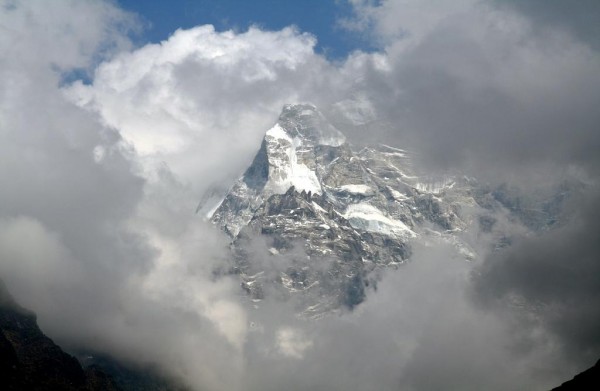Incredible Himalayas – Savor its 10 Charms
The Himalayan range of mountains pass through Pakistan, India, Nepal, Sikkim, Bhutan and Tibet. India gets the touch of the mighty Himalayas in parts of Jammu and Kashmir, Himachal Pradesh, Uttaranchal and Sikkim. The epitome of magnificence, Mount Everest, is the jewel of Himalayas.

Take a look at what these gentle giants are about, and what beauty it amasses, for the mankind to wonder throughout their lives:
Peace amid the unadulterated beauty of the Himalayas
The Himalayas are a natural phenomena; the colossal creation is filled with treasures which attract man towards them, so that he can enrich his mind and refresh his senses. The lakes, rivers, amazing sun-rises and sun-sets, flora and fauna, fresh air – all sum up to give a pure encounter with mother nature. Be it the spectacular snow-covered mountains or scenic vegetation covered mountains, the Himalayas elevate us emotionally and physically.
Weather conditions in Himalayas
The weather of the Himalayas is diverse; it varies according to the altitude and geographical location. The two major seasons are winter and summer; winter is the period when most of the Himalayan regions receive snowfall. Summers on the other hand are mild, making the Himalayas a perfect summer getaway. Higher the altitude, colder becomes the climate, and after the height of around 4,880 m the temperature falls below the freezing point and snow becomes a permanent fixture. Himalayas usually receive abundant rainfall, especially in the southern slopes and in the Gangetic Plains of India.
The glorious Himalayan summits
The Himalayas have been proclaimed as the highest mountain range in the world. The prominence of Himalayas is reached at 8,848 m in Mount Everest, a name which evokes reverence in the hearts of adventure seeking souls. Within the Indian borders, the highest Himalayan peak is Kanchenjunga, which stands tall at the height of 8,586 m, followed by Nanda Devi (7,816 m), Kamet (7,756 m) and Saltoro Kangri (7,742 m). These peaks call the adventure lovers to take up the challenge of trekking up to them and tracing the footsteps of Himalayan legends which reverberate in the atmosphere.
The milky grace of Himalayan glaciers and snow
Himalayas possess snow and glaciers, which are the vital natural resources of frozen fresh water. The glaciers are broadly divided into three river basins – Indus, Brahmaputra and Ganga. The significance of the Himalayan snow and glaciers lies in their perpetual melting action, which sustains commercial and domestic life in the northern plains of India even at times when the other parts of the country go dry without water.
Alluring Himalayan lakes
The glorious Himalayas boast of hundreds of lakes of varying sizes. The lakes, usually, diminish in size as the altitude rises. Tilicho Lake in the Annapurna range of Himalayas (Nepal) is located at the highest point of 4,949 m. The largest Himalayan Lake, covering about 700 sq km of area is Pangong Tso (lies in both India and Tibet), followed by Yamdrok Tso (Tibet) with 638 sq km of area. Most notable glacial lakes in Himalayas are Lake Rakshastal and Lake Manasarovar, both are located in Tibet. Other remarkable lakes of Himalayas include Gurudongmar Lake (North Sikkim), Cholamu Lake (North Sikkim) and Lake Tsongmo (Sikkim, near Indo-China border).
Untamed creatures of Himalayas
Himalayas are home to a unique group of rare wild creatures like the endangered snow leopard, Bengal tiger, one-horned rhino, Himalayan wild yak, Asian elephant, blue sheep, musk deer, black bear, tahr, wolf and red panda. The amazing vegetation of Himalayas also provides shelter to wonderful avian population, including flamingo, endangered Himalayan quail, cheer pheasant, western tragopan, golden eagle and mountain hawk-eagle.
The magnificent flora and fauna of the Himalayas are conserved under national parks and sanctuaries. Some of the major National Parks and Sanctuaries include – Jim Corbett National Park, Kugti Wildlife Sanctuary, Great Himalayan National Park, Kedarnath Wildlife Sanctuary, Kaziranga National Park and Hemis National Park.
Healing touch of Himalayas
Mother Nature has hidden her healing agents in the Himalayas in the form of herbs, which form the basis of many Ayurvedic formulas. The water flowing through the Himalayas also contains certain minerals. Besides its exquisiteness, there are many interesting facts about the Himalayas which would leave one astonished.
Himalayan Villages and their culture
Nestled within the greatness of the Himalayas are the villages; the human settlements basking in the immense beauty of nature’s alluring gifts are a significant sight in themselves. Every region, every tribe has their own sets of traditions and customs which are reflected in their clothes, language, food, festivals, dance and music. One may credit the geographical isolation of various areas for the preservation of the various diverse cultures of Himalayas. Many famous festivals take place in Himalayas, giving good glimpses of the history, heritage and religious rituals of a respective region or tribe, like the Hemis festival and Kalachakra festival of Ladakh, Shoton Yoghurt festival of Tibet, Thimpu festival of Bhutan.
The Holy side of Himalayas
The prominent faiths followed in the Himalayan region are Hinduism, Buddhism and Islam. Hinduism dominates the southern side of the Himalayas, whereas the northern part has greater influence of Buddhism. Buddhists monasteries and Gompas are spread out in good numbers in the Himalayas; blending the tranquility of monasteries with that of the mountains, making the whole environment divine, like the Hemis monastery in Ladakh and Rumtek in Sikkim. Mount Kailash (Tibet) is a peak which is venerated in Hinduism, Buddhism, Jainism as well as Bön.
Himalayas: A site for adventure
Himalayas provide the perfect opportunity to test one’s endurance, face one’s fears and get that adrenaline pumping. It provides the natural and perfect setting for undertaking adventure activities like paragliding, mountaineering, trekking, skiing and rafting.
The world’s highest mountain range, Himalayas, is one of the nature’s favorite children. The splendid structures of nature uplifts, revitalizes, heals, challenges – in short they give life and also lets one learn how best to live it!



